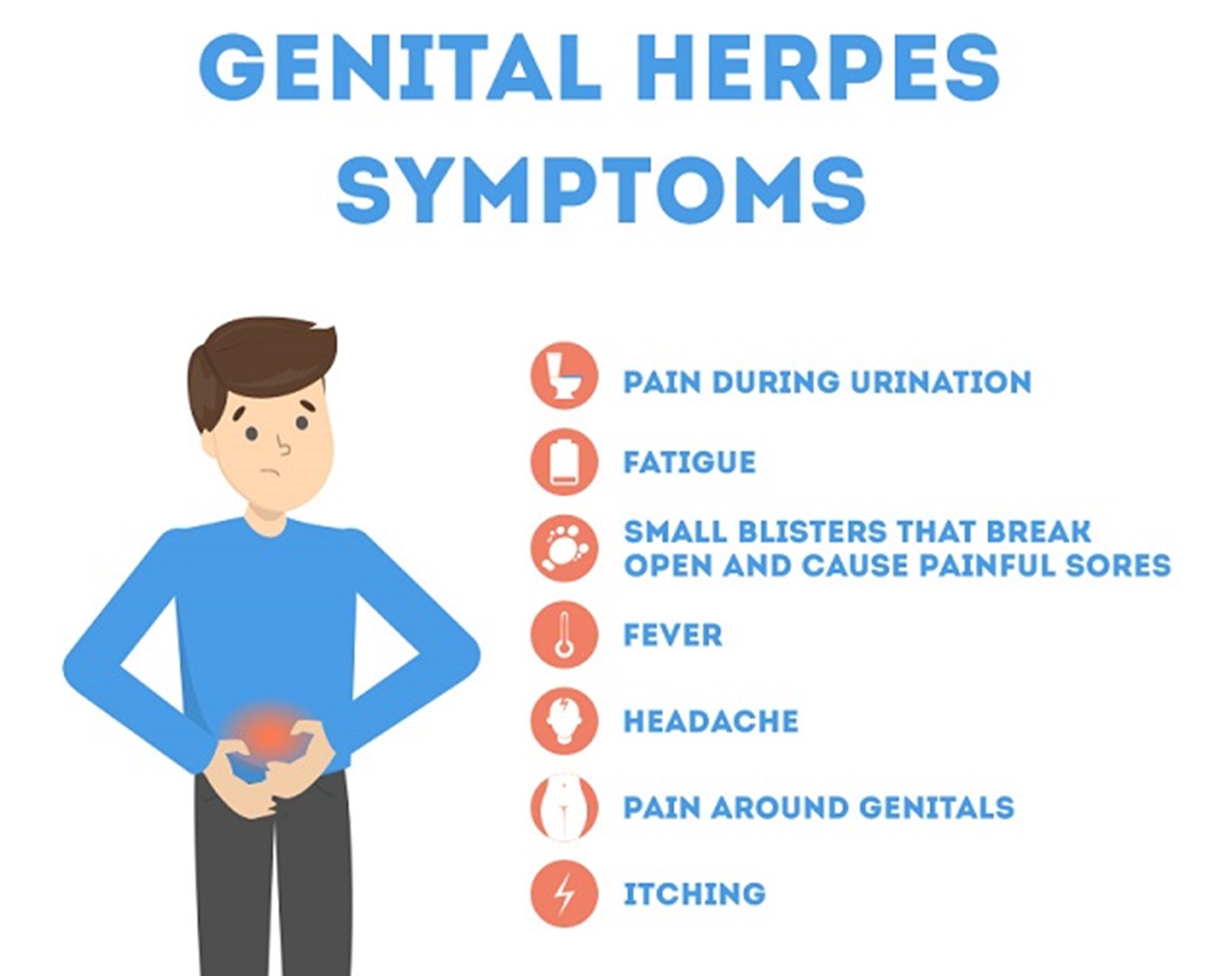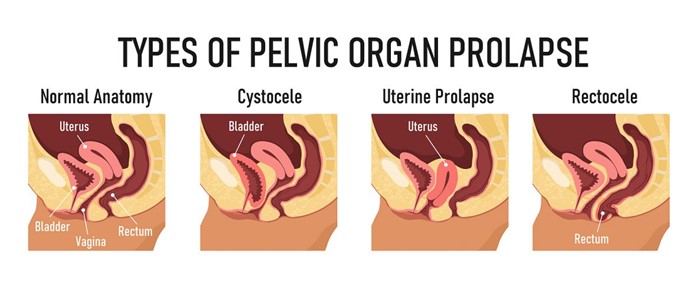A woman is admitted for repair of cystocele and rectocele. She has nine living children. In taking her health history, what would the nurse expect to find?
Sporadic vaginal bleeding accompanied by chronic pelvic pain
Menstrual irregularities and hirsutism on the chin
Heavy leukorrhea with vulvar pruritus
Stress incontinence with feeling of low abdominal pressure
The Correct Answer is D
Choice A: Sporadic vaginal bleeding accompanied by chronic pelvic pain is not the correct answer because it is not a symptom of cystocele or rectocele. This symptom may indicate other conditions such as endometriosis, fibroids, or cervical cancer.
Choice B: Menstrual irregularities and hirsutism on the chin are not the correct answers because they are not symptoms of cystocele or rectocele. These symptoms may indicate other conditions such as polycystic ovary syndrome (PCOS), thyroid disorder, or menopause.
Choice C: Heavy leukorrhea with vulvar pruritus is not the correct answer because it is not a symptom of cystocele or rectocele. This symptom may indicate other conditions such as bacterial vaginosis, yeast infection, or sexually transmitted infection (STI).
Choice D: Stress incontinence with a feeling of low abdominal pressure is the correct answer because it is a symptom of cystocele or rectocele. Stress incontinence is a condition that causes leakage of urine when there is increased pressure on the bladder, such as during coughing, sneezing, laughing, or lifting. Cystocele or rectocele can cause stress incontinence by weakening the pelvic floor muscles and connective tissue that supports the bladder and urethra. The feeling of low abdominal pressure is also a symptom of cystocele or rectocele, as it indicates that the bladder or rectum is protruding into the vagina.
Nursing Test Bank
Naxlex Comprehensive Predictor Exams
Related Questions
Correct Answer is A
Explanation
Choice A: Reports of itching, tingling, and pain in the genital area are the correct answer because they are common symptoms of genital herpes. Genital herpes is a sexually transmitted infection (STI) caused by the herpes simplex virus (HSV). It can cause outbreaks of painful blisters or sores on or around the genitals, anus, or mouth. The blisters or sores usually heal within a few weeks, but the virus remains in the body and can reactivate at any time. Before an outbreak, some people may experience prodromal symptoms such as itching, tingling, or pain in the affected area.
Choice B: Painful urination with a penile discharge present is not the correct answer because it is more likely a symptom of another STI, such as gonorrhea or chlamydia. Gonorrhea and chlamydia are bacterial infections that can affect the urethra, cervix, rectum, or throat. They can cause symptoms such as burning or pain during urination, abnormal discharge from the penis or vagina, or bleeding between periods.
Choice C: Wart-like flesh-colored lesions on the scrotal area are not the correct answer because they are more likely a symptom of another STI, such as human papillomavirus (HPV). HPV is a viral infection that can cause genital warts or cervical cancer. Genital warts are small, soft, flesh-colored growths that can appear on or around the genitals, anus, or mouth. They may be flat, raised, or cauliflower-shaped.
Choice D: A chancre on the penis is not the correct answer because it is more likely a symptom of another STI, such as syphilis. Syphilis is a bacterial infection that can affect various organs and systems of the body. It has four stages: primary, secondary, latent, and tertiary. In the primary stage, syphilis causes a painless sore called a chancre that can appear on or around the genitals, anus, or mouth. The chancre usually heals within a few weeks, but the infection can progress to the next stages if left untreated.

Correct Answer is ["B","C","D","E"]
Explanation
Choice A: Fecal incontinence is not the correct answer because it is not a disorder of pelvic organ prolapse. Fecal incontinence is a condition that causes the loss of bowel control, resulting in involuntary leakage of stool or gas. It can be caused by various factors such as nerve damage, muscle weakness, or diarrhea. It is not related to the displacement or descent of pelvic organs.
Choice B: Rectocele is the correct answer because it is a disorder of pelvic organ prolapse. Rectocele is a condition that occurs when the rectum bulges or sags into the vagina, creating a pouch or hernia. It can cause symptoms such as constipation, difficulty with bowel movements, or a feeling of pressure or fullness in the vagina. It is caused by the weakening or stretching of the pelvic floor muscles and connective tissue that support the rectum and vagina.
Choice C: Urinary incontinence is the correct answer because it is a disorder of pelvic organ prolapse. Urinary incontinence is a condition that causes the loss of bladder control, resulting in involuntary leakage of urine or urge to urinate. It can be caused by various factors such as stress, infection, or medication. It is also related to the displacement or descent of pelvic organs, such as the bladder or urethra, which can affect the function and closure of the urinary sphincter.
Choice D: Cystocele is the correct answer because it is a disorder of pelvic organ prolapse. Cystocele is a condition that occurs when the bladder protrudes or drops into the vagina, creating a pouch or hernia. It can cause symptoms such as urinary frequency, urgency, or retention, or a feeling of pressure or fullness in the vagina. It is caused by the weakening or stretching of the pelvic floor muscles and connective tissue that support the bladder and vagina.
Choice E: Enterocele is the correct answer because it is a disorder of pelvic organ prolapse. Enterocele is a condition that occurs when the small intestine bulges or descends into the vagina, creating a pouch or hernia. It can cause symptoms such as lower back pain, pelvic pressure, or difficulty with bowel movements. It is caused by the weakening or stretching of the pelvic floor muscles and connective tissue that support the small intestine and vagina.

Whether you are a student looking to ace your exams or a practicing nurse seeking to enhance your expertise , our nursing education contents will empower you with the confidence and competence to make a difference in the lives of patients and become a respected leader in the healthcare field.
Visit Naxlex, invest in your future and unlock endless possibilities with our unparalleled nursing education contents today
Report Wrong Answer on the Current Question
Do you disagree with the answer? If yes, what is your expected answer? Explain.
Kindly be descriptive with the issue you are facing.
